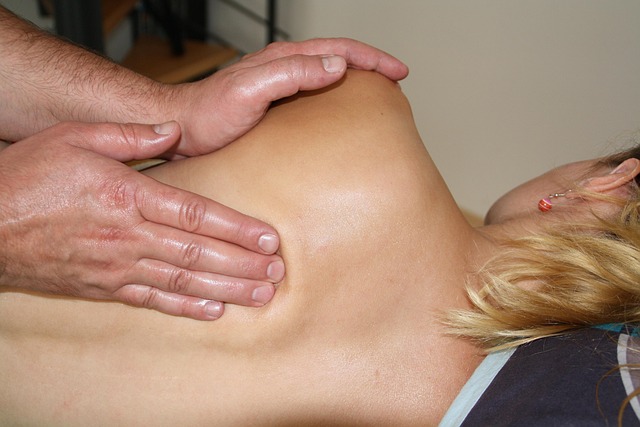Cold therapy, including ice and cryotherapy, effectively manages joint pain and inflammation. By constricting blood vessels and blocking pain signals, it reduces swelling and provides rapid relief for conditions like arthritis, sprains, strains, and post-workout soreness. As a natural alternative to anti-inflammatory medications, cold therapy speeds up joint recovery, enhances mobility, and offers lasting comfort. Incorporating cold compresses or water therapy into daily routines complements traditional treatments, empowering individuals to actively manage their joint health.
“Explore the power of cold as a natural ally in managing joint pain and inflammation. This article delves into cold therapy, a complementary approach gaining traction in arthritis treatment. We examine how ice and cryotherapy can enhance the effectiveness of anti-inflammatory drugs while offering additional benefits for joint health. Discover the science behind cold compresses and their role in accelerating recovery, especially through emerging techniques like cold water therapy.”
Understanding Cold Therapy: A Natural Approach to Joint Pain Relief
Cold therapy, also known as cryotherapy, has emerged as a powerful and natural approach to managing joint pain and inflammation. By applying ice or cold packs to affected areas, this method offers significant relief for conditions such as arthritis, sprains, strains, and post-workout soreness. The benefits of cold therapy extend beyond the immediate sensation of cooling; it helps reduce swelling by constricting blood vessels, easing pressure on joints, and decreasing nerve impulses that cause pain.
For individuals seeking alternative remedies or complementary treatments alongside anti-inflammatory medications, cold therapy can be a game-changer. It facilitates faster joint recovery while providing long-lasting relief. Whether through ice baths, cold compresses, or targeted applications of cold packs, this natural method empowers folks to take control of their joint health and experience improved mobility with reduced discomfort.
How Ice and Cryotherapy Can Complement Anti-Inflammatory Drugs
Ice and cryotherapy can significantly complement anti-inflammatory drugs in managing joint pain and inflammation. Cold therapy for joint pain involves applying ice packs or immersing the affected area in cold water, which helps reduce swelling by constricting blood vessels and blocking pain signals to the brain. This provides immediate relief from arthritis symptoms and other inflammatory conditions, making it an effective short-term treatment option.
Additionally, cryotherapy for joint pain relief, such as whole-body cryo chambers or localized ice baths, offers profound anti-inflammatory effects. The extreme cold triggers a series of physiological responses, including increased circulation after rewarming, which promotes the elimination of metabolic waste and cellular repair. This natural joint pain relief method enhances the benefits of anti-inflammatory medications by reducing inflammation, speeding up recovery time, and potentially lowering the overall dosage required for drug therapy.
The Science Behind Cold Compresses: Benefits for Joint Inflammation
The Science Behind Cold Compresses: Benefits for Joint Inflammation
Cold therapy, a simple yet powerful tool, has been used for centuries to alleviate pain and reduce inflammation. When applied to joints affected by arthritis or other inflammatory conditions, cold compresses offer significant advantages. The primary mechanism involves the constriction of blood vessels, which helps minimize fluid buildup and swelling in the affected area. By cooling the skin, cold therapy also reduces metabolic activity in the surrounding tissues, slowing down the production of pro-inflammatory chemicals.
Regular use of ice therapy for arthritis and other joint pain conditions can result in reduced inflammation, improved mobility, and overall better joint function. Cold packs for inflammation not only provide immediate relief from pain but also aid in joint recovery by accelerating the healing process. Cryotherapy for joint pain relief has gained popularity due to its natural ability to offer targeted and effective treatment without the side effects often associated with medications. This makes cold therapy a valuable complement to anti-inflammatory drugs, promoting faster and more sustainable joint health.
Integrating Cold Water Therapy into Your Joint Recovery Routine
Integrating cold therapy into your joint recovery routine can offer significant benefits as a complement to anti-inflammatory medications. Cold water therapy, such as immersing affected joints in ice or applying cold packs, has long been used to alleviate pain and reduce inflammation. The application of cold significantly restricts blood flow to the area, which helps decrease metabolic waste products that cause inflammation. This process promotes faster healing and reduces joint stiffness.
For individuals suffering from arthritis or other chronic joint conditions, combining medication with targeted cold therapy can provide natural joint pain relief. Ice therapy for arthritis is a simple yet powerful tool that can be easily incorporated into daily routines. By incorporating cold compresses into your regimen, you may experience improved mobility, reduced swelling, and enhanced overall joint health. This approach not only supports traditional treatment methods but also empowers individuals to take an active role in managing their symptoms effectively.
Cold therapy, including ice and cryotherapy, serves as a powerful complement to anti-inflammatory medications for managing joint pain and inflammation. By leveraging the science-backed benefits of cold compresses, individuals can enhance their joint recovery routines. Integrating cold water therapy not only provides natural relief but also supports faster healing and improved mobility. For those seeking effective solutions for conditions like arthritis, cold therapy offers a safe, accessible approach to complement traditional treatments, ensuring a holistic path to pain management and enhanced overall well-being.
